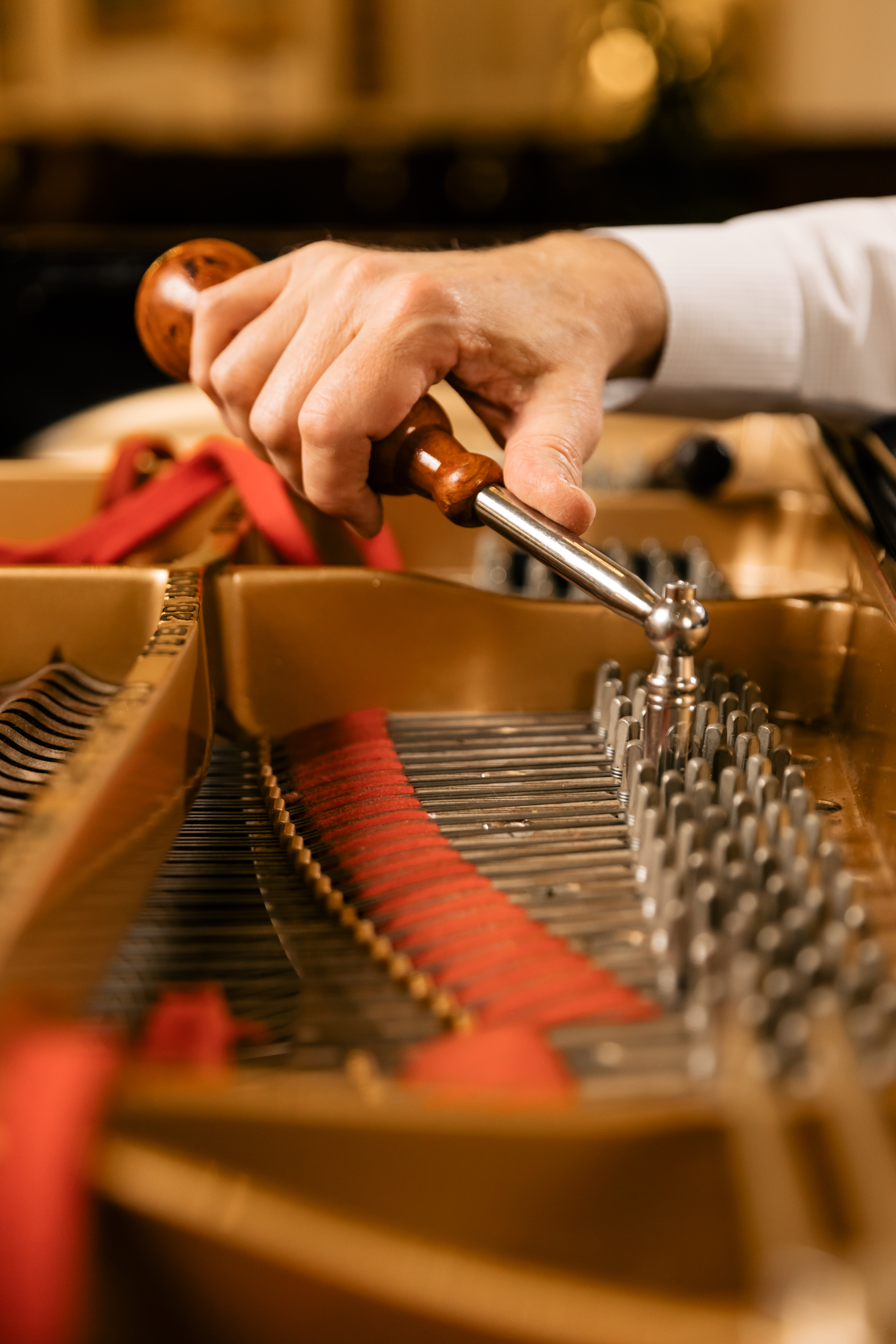Services
Piano Tuning
Piano Tuning is the most essential regularly-scheduled form of piano maintenance.
Tuning is a process which alters the pitch of the piano. We use tuning as means to change intonation positively to best suit our standard of equal temperament and compliment the diatonic scale. Tuning restores the balance of the piano by returning it to the standard pitch for which it was designed. Regular tuning in equal temperament allows the piano to sound well in any chosen key.
Piano tuning involves the physical manipulation of approximately 236 tuning pins, altering the tension of the wire attached to each tuning pin, in order to change the pitch, either higher (sharp) or lower (flat). Each note is “set” at a place which provides for the distribution of frequencies and beat rates that we find most pleasing to our ears. Piano tuning is an art in itself requiring many years to develop the knowledge, skills and proficiencies necessary for artistic tunings. The overall skills needed for aural tuning require exhaustive practice, patience and dedication.
Piano tuning on a regular basis is especially important in Chicago, due to seasonal changes and frequent swings in temperature and humidity levels.

“Jeff’s services are the only ones I’ve trusted to attend to my completely restored 1932 Steinway Grand Piano.“
Frequently Asked Questions:
Q: How often should I have my piano tuneD:?
A: Twice yearly is generally recommended, once yearly at a minimum. More often may be recommended, depending on your level of piano proficiency and the ability of your piano to hold pitch.
Q: Why does my piano go out of tune:?
A: Pianos go out of tune for a variety of reasons. Pianos are sensitive to climate change, temperature and humidity levels. When moisture levels increase (such as during summer months) pianos often go sharp in pitch. Piano strings are stretched from the tuning pin at the front of the piano to a hitch pin on the rigid cast iron plate or frame. Each string passes over a bridge (either treble or bass) and makes its connection to the soundboard via the bridge. When the moisture content of the soundboard increases, the board rises in reaction because it has absorbed ambient moisture from the air. Pitch rises or becomes sharp as the strings are tensioned by the enlarged soundboard. The opposite is true when moisture levels decrease such as during winter months as moisture leaves the soundboard. Pitch drops (or goes flat) as strings relax due to shrinkage of the soundboard profile.
Pianos also go out of tune from frequent or hard playing as piano hammers impact the strings directly. Piano wire also stretches for several years due to elasticity of the wire. Over time it becomes more brittle and no longer stretches noticeably.
Pianos also go out of tune when the pinblock (wood, usually a thick maple block under the tuning pins) becomes weak over time and loses the ability to hold a necessary amount of torque at the tuning pins to prevent slipping. A common reason for piano rebuilding is the inability of the piano to stay in tune because of a pinblock failure.
Q: How Do YOu Tune A Piano:?
A: The tools used to tune a piano are a tuning wrench or lever, wedge mutes made of cloth or rubber, and sometimes a few “temperament strips”. Each of the 230 + tuning pins is turned or adjusted so that the pitch is altered either higher or lower. In a traditional aural tuning process, a temperament is set at the center region of the keyboard and octaves are tuned outwardly in various sequences to the treble and bass extremes of the piano.
Q: Do Seasons, Temperature, or Humidity Affect Tuning?:
A: Absolutely. Keeping your piano in a stable environment with controlled temperature and humidity, out of direct sunlight or nearness to heat vents, exterior walls, exterior doorways will all contribute to your piano being more pitch-stable between tuning intervals.
For The Finest In Piano Servicing
Contact Chicago Piano Service, Inc.
Address
1038 Jackson Ave
River Forest, IL 60305
Hours
By Appointment Only
